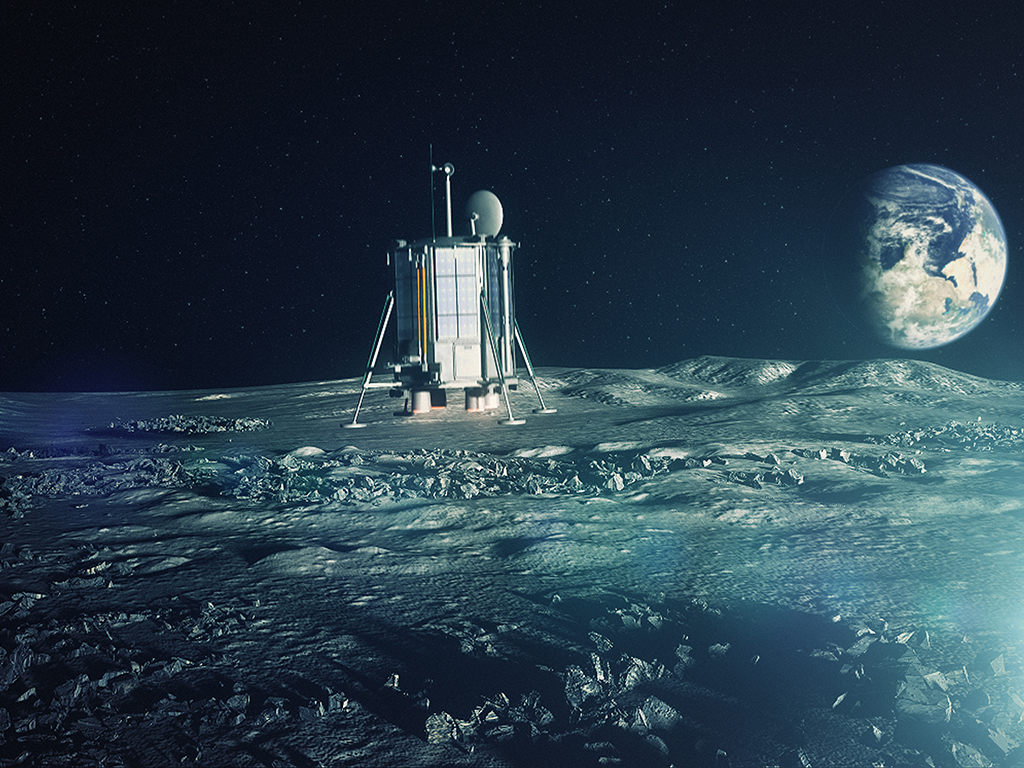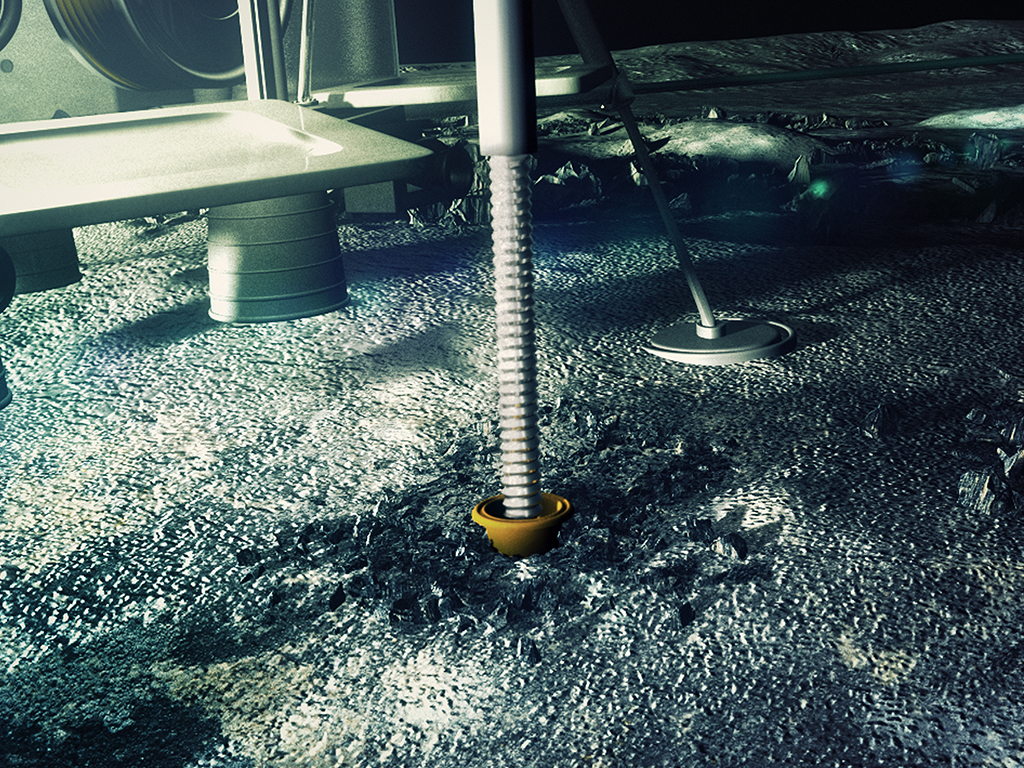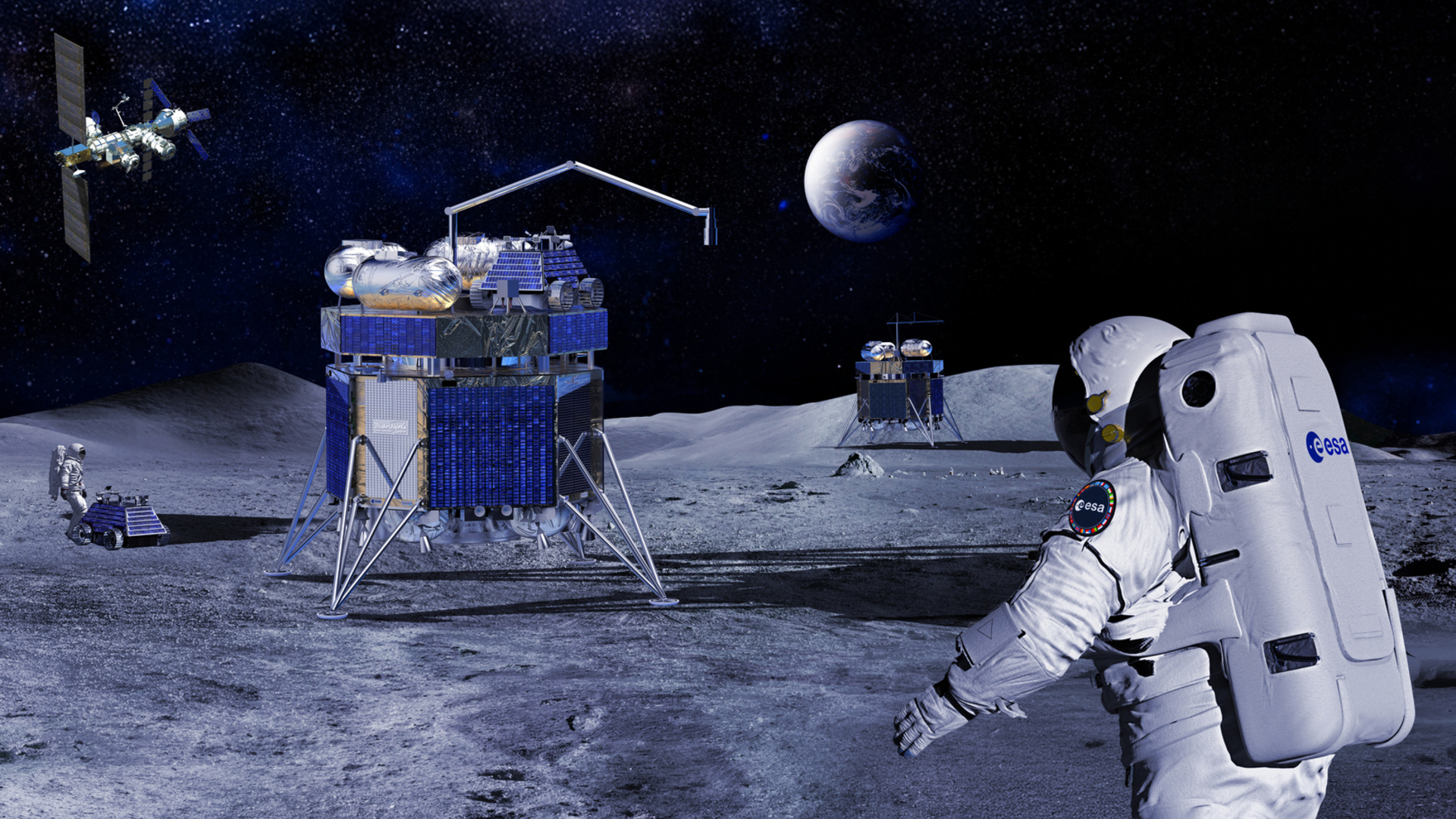Private Moon Mission Aims to Drill Into Lunar South Pole by 2024

A privately funded robotic moon mission intends to drill deep beneath the lunar surface in 2024, both to advance understanding of the solar system and to inspire future generations to get more involved in space science and exploration.
If all goes according to plan, the newly announced Lunar Mission One will drill at least 65 feet (20 meters) — and perhaps as much as 330 feet (100 m) — underground at the moon's south pole in 2024, collecting samples that should shed light on the formation of the Earth and moon, as well as the feasibility of a manned lunar outpost in the area, project organizers said.
Going so deep underground will give scientists a look at pristine ancient rock untouched by cosmic radiation or meteorite impacts over the eons, the mission representatives added. [Most Amazing Moon Missions of All Time]
"Lunar Mission Onewill make a huge contribution to our understanding of the origins of our planet and the moon, and will inspire a generation to learn more about space, science and engineering, in the same way that my generation was inspired by the Apollo moon landings," David Iron, founder of Lunar Missions Ltd. and the Lunar Missions Trust, said in a statement.
While the unmanned Lunar Mission One was just announced publicly Tuesday evening (Nov. 18), it has been in the works for the past seven years, project officials said.
The United Kingdom-based mission aims to pay for its ambitious activities in several different ways, starting with a Kickstarter campaign that launched on Tuesday. Organizers hope the crowdfunding effort will raise about $950,000, which would fund initial development operations.
People will also be able to purchase "digital memory boxes" — giving participants the chance to contribute to a time capsule that Lunar Mission One plans to bury as part of its work at the south pole of the moon. This time capsule will also contain a record of life on Earth and a chronicle of human history and civilization, project organizers said.
Breaking space news, the latest updates on rocket launches, skywatching events and more!
Sales of digital memory boxes will continue for years, and mission representatives are counting on big international participation. Market research suggests that 1 percent of people around the world who can afford a digital memory box will buy one, potentially resulting in revenues of about $4.7 billion, mission representatives said.
Any surplus money raised will be put into a charitable trust dedicated to funding future space science and exploration activities, the organizers added.
Lunar Missions Ltd. runs Lunar Mission One with the assistance of a number of partner organizations, including RAL Space (part of the United Kingdom's Science and Technology Facilities Council), University College London, The Open University in the United Kingdom and the Institute of Education in London.
"Lunar Mission One is both ambitious and innovative, demonstrating an exciting way of enabling lunar exploration," RAL Space Director Richard Holdaway said in a statement. "As well as direct exploration benefits, the mission will have longer-term advantages, including technological advances and knowledge."
To learn more about Lunar Mission One, go to http://www.lunarmissionone.com.
Follow Mike Wall on Twitter @michaeldwall and Google+. Follow us @Spacedotcom, Facebook or Google+. Originally published on Space.com.

Michael Wall is a Senior Space Writer with Space.com and joined the team in 2010. He primarily covers exoplanets, spaceflight and military space, but has been known to dabble in the space art beat. His book about the search for alien life, "Out There," was published on Nov. 13, 2018. Before becoming a science writer, Michael worked as a herpetologist and wildlife biologist. He has a Ph.D. in evolutionary biology from the University of Sydney, Australia, a bachelor's degree from the University of Arizona, and a graduate certificate in science writing from the University of California, Santa Cruz. To find out what his latest project is, you can follow Michael on Twitter.


